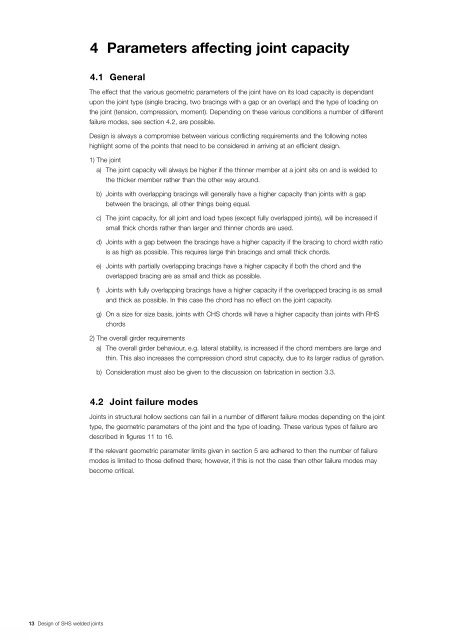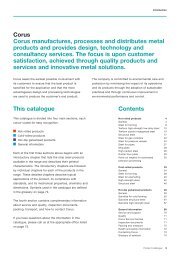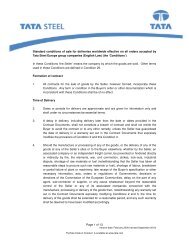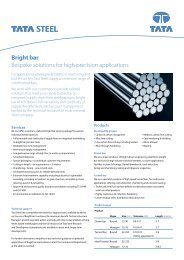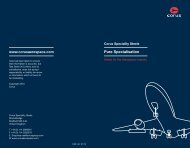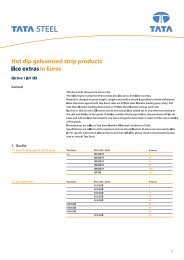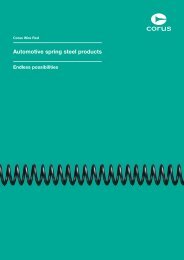TUB 2765 SHS Welded Joints - Tata Steel
TUB 2765 SHS Welded Joints - Tata Steel
TUB 2765 SHS Welded Joints - Tata Steel
Create successful ePaper yourself
Turn your PDF publications into a flip-book with our unique Google optimized e-Paper software.
13 Design of <strong>SHS</strong> welded joints<br />
4 Parameters affecting joint capacity<br />
4.1 General<br />
The effect that the various geometric parameters of the joint have on its load capacity is dependant<br />
upon the joint type (single bracing, two bracings with a gap or an overlap) and the type of loading on<br />
the joint (tension, compression, moment). Depending on these various conditions a number of different<br />
failure modes, see section 4.2, are possible.<br />
Design is always a compromise between various conflicting requirements and the following notes<br />
highlight some of the points that need to be considered in arriving at an efficient design.<br />
1) The joint<br />
a) The joint capacity will always be higher if the thinner member at a joint sits on and is welded to<br />
the thicker member rather than the other way around.<br />
b) <strong>Joints</strong> with overlapping bracings will generally have a higher capacity than joints with a gap<br />
between the bracings, all other things being equal.<br />
c) The joint capacity, for all joint and load types (except fully overlapped joints), will be increased if<br />
small thick chords rather than larger and thinner chords are used.<br />
d) <strong>Joints</strong> with a gap between the bracings have a higher capacity if the bracing to chord width ratio<br />
is as high as possible. This requires large thin bracings and small thick chords.<br />
e) <strong>Joints</strong> with partially overlapping bracings have a higher capacity if both the chord and the<br />
overlapped bracing are as small and thick as possible.<br />
f) <strong>Joints</strong> with fully overlapping bracings have a higher capacity if the overlapped bracing is as small<br />
and thick as possible. In this case the chord has no effect on the joint capacity.<br />
g) On a size for size basis, joints with CHS chords will have a higher capacity than joints with RHS<br />
chords<br />
2) The overall girder requirements<br />
a) The overall girder behaviour, e.g. lateral stability, is increased if the chord members are large and<br />
thin. This also increases the compression chord strut capacity, due to its larger radius of gyration.<br />
b) Consideration must also be given to the discussion on fabrication in section 3.3.<br />
4.2 Joint failure modes<br />
<strong>Joints</strong> in structural hollow sections can fail in a number of different failure modes depending on the joint<br />
type, the geometric parameters of the joint and the type of loading. These various types of failure are<br />
described in figures 11 to 16.<br />
If the relevant geometric parameter limits given in section 5 are adhered to then the number of failure<br />
modes is limited to those defined there; however, if this is not the case then other failure modes may<br />
become critical.


